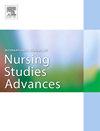Delirium prevalence and management in general wards, emergency departments, rehabilitation centres and nursing homes in Germany, Austria and Switzerland (DACH countries): A secondary analysis of a worldwide point prevalence study
IF 3.1
Q1 NURSING
International Journal of Nursing Studies Advances
Pub Date : 2025-02-10
DOI:10.1016/j.ijnsa.2025.100309
引用次数: 0
Abstract
Background
Delirium is a common neuropsychiatric syndrome associated with an increased risk of mortality and length of stay. Current delirium prevalence, assessments and management practices of delirium in DACH countries are unknown.
Objective
To examine the delirium point prevalence, assessment, management practices in general wards, emergency departments, rehabilitation centres and nursing homes in DACH countries.
Design
Secondary data analysis from a prospective, cross-sectional, worldwide one-day point delirium prevalence study (registered in the German Registry for Clinical Trials, DRKS00030002)
Setting(s)
General hospital wards, emergency departments, rehabilitation centres and nursing homes excluding operating rooms, ambulatory, high acuity, intermediate care and intensive care units.
Participants
In total, 172 wards (majority were general wards; 91.3 %, n = 157) from Germany, Austria and Switzerland participated.
Methods
Descriptive analysis of a 39-questions online survey with aggregated routine patient and facility data completed by healthcare professionals, administrators, and researchers on World Delirium Awareness Day, March 15th, 2023. Data on delirium prevalence were collected at 8:00 A.M. and P.M. (± 4 h). Use of delirium assessments, delirium awareness structures, presence of care protocols, and barriers to delirium management structures were reported.
Results
Overall delirium prevalence was 7.1 % (n = 143/2,028) at 8:00 A.M. and 7.2 % (n = 133/1,842) at 8:00 P.M. There was no statistically significant difference between the delirium prevalence assessed with valid (p = .770) or non-valid assessment (p = .643). The most frequent delirium assessments were the Nursing Delirium Screening Scale (16.3 %, n = 28/172), the Confusion Assessment Method (15.7 %, n = 27/172) and the Delirium Observation Screening Scale (9.3 %, n = 16/172). The most reported interventions to provide delirium awareness and education were “delirium is mentioned in handovers” (53.5 %, n = 92/172), “availability of delirium experts” (51.2 %, n = 88/172) and “delirium education during the last year” (48.3 %, n = 83/172). An existing delirium management protocol was present in 76.7 % (n = 132/172) of participating wards. The most frequently reported barriers to delirium care were “shortage of staff” (45.3 %, n = 78/172), “patients who are difficult to assess” (32.6 %, n = 56/172), and “communication gaps between professions” (29.1 %, n = 50/172). As non-pharmacological interventions, “mobilization” (92.4 %, n = 159/172), “pain management” (87.8 %, n = 151/172), and “adequate fluids” (83.7 %, n = 144/172) were mostly reported.
Conclusions
Delirium is a frequent complication in patients in DACH countries. More than three quarter of participating wards reported a delirium management protocol suggesting awareness of published guidelines and best practice recommendations. Improved staffing, education on delirium assessment, and interprofessional communication could be helpful to improve the usage of valid delirium assessments and addressing barriers to delirium management.
求助全文
约1分钟内获得全文
求助全文
来源期刊

International Journal of Nursing Studies Advances
Nursing-General Nursing
CiteScore
5.80
自引率
0.00%
发文量
45
审稿时长
81 days
 求助内容:
求助内容: 应助结果提醒方式:
应助结果提醒方式:


